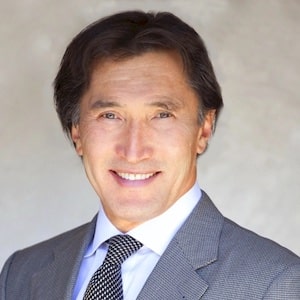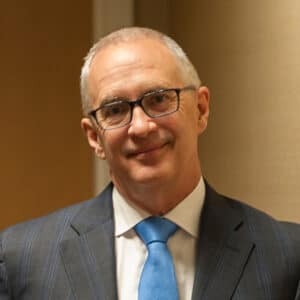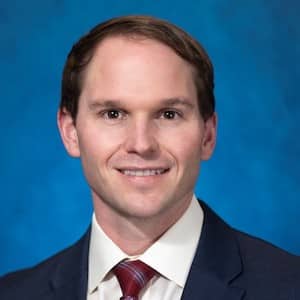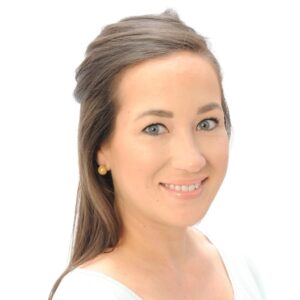Blog
When researching information regarding anti-aging solutions for facial wrinkles, you are likely to see references to two products: Tretinoin and Retinol. The two are commonly used and belong to the same class of chemical compounds, although they exhibit differing strength levels. Both products fall into the category of “retinoids” intended to “turnover” skin cells, stimulate collagen production, and reduce discoloration.
Note that tretinoin is sometimes referred to as Retin-A and, as a result, is often confused with retinol. But the products have very different strengths, are administered in specific circumstances, and can have notably different side effects.
How Do These Applications Work to Improve Facial Appearance?
While possessing different levels of strength, retinol and tretinoin stimulate the “turnover” or replacement of skin cells by exfoliating the top layers to reveal newer and smoother skin beneath. They both encourage the production of collagen and elasticity to yield a more youthful appearance. These will also reduce discoloration from sunspots.
Retinol
Retinol is considered the less aggressive of the two substances, readily available over the counter from a drugstore, aesthetician, or dermatologist. The product is a better solution for those with sensitive skin and is often used by cosmetic dermatologists to address fine lines and wrinkles.
The dermatologists at Napa Solano Plastic Surgery recommend implementing retinol applications by starting slow, with the lowest concentration once a week, two times a week, every other day, then daily as tolerated. Applications remove the existing skin cells that are replaced by new ones that generate a fresher, restored appearance. Side effects are usually minimal with this product.
This is currently not FDA regulated.
Tretinoin
Tretinoin is 20 times more potent than retinol. Available only by prescription, tretinoin may have some significant side effects, including skin redness, dryness, peeling, stinging, and sun sensitivity. Because of the products’ aggressiveness, users are advised to interrupt daily applications for a day or two when peeling and redness become excessive. Or users may dilute the tretinoin by mixing it with a regular skin moisturizer. They also should be sure to wear sunblock with the use of tretinoin.
Tretinoin currently is FDA-approved.
Which Product is Better?
Since no single approach is suitable for everyone, consulting an experienced dermatologist is the best first step. The less aggressive choice, retinol, is better for those with very dry or sensitive skin.
While either product can be effective for improving lines and wrinkles, more severe cases of acne are best treated with doctor-prescribed tretinoin.
Always begin slowly with either product and pay close attention to any side effects that may occur. Make sure to continue using moisturizer at all times.
And always wear sunscreen with either product, as the products will soon reveal a new, fresh skin layer that the sun’s harmful rays can damage.
Consult with Experts
The professional, licensed dermatologists, aestheticians, and trained staff at Napa Solano Plastic Surgery and Medispa are eager to assist with any skin or appearance-related issues you may be experiencing.
To learn more about Napa Solano Plastic Surgery’s procedures and reviews or to schedule a professional and private consultation, visit the clinic’s website.
Or you may phone Napa Solano Plastic Surgery at (707)-258-6053.
Blog
Recently, High School Musical Actress Ashley Tisdale shared her post-partum journey with diastasis recti. This is a condition in which rectus abdominis muscle or six pack muscle get stretched overtime usually due to pregnancy, weight fluctuation, heavy weight lifting.
Common signs and symptoms associated with diastasis recti include
- Bulging of the abdomen
- Weakness of abdominal muscle
- Softness, “floppiness” around belly button
- Difficulty with lifting, walking
- Pain during sex
- Pelvic or hip pain
- Lower back pain
- Poor posture
- Incontinence of urine with cough or sneeze
- Constipation
Depending on the severity of the separation, treatment can range from core strengthening exercises, non-invasive muscle tightening procedures, to surgically tightening the muscle with sutures as seen in some tummy tucks.
If you are experiencing symptoms or emotional distress due to diastasis recti, you should consult with a plastic surgeon to be evaluated and treated appropriately. The team at Napa Solano Plastic Surgery are available to setup a consultation request to talk with you about what you might need.
Blog
Do you have some swelling around your eyes and wondering what it could be from and how to get rid of them? Well first step is to understand if you have eyebags or festoons. A plastic surgeon would be the best person to accurately diagnose which one you have.
Eyebags are swelling and puffiness right under the water lines. Festoons are swelling and puffiness under the eyelids and the cheek area. Doctors are finding that the reasons for eyebags are mostly due to aging. Fats under the eyes become bulging, ligaments and muscles support these fats are loosening. Surgery will help to remove, rearrange fat, tighten muscle and ligaments and remove excess skin. All swelling and puffiness under the eyelids in the cheek area are termed malar bags.
Some patients have systemic disease like lupus, thyroid, etc…that cause retained water and swelling in the under eyes and cheeks. This is called malar edema. These patients can be best treated with diuretics and addressing their underlying diseases.
Some patients are born with festoons where they have extra fat under the eyes muscles that retain fluid, laxity of muscle around the eyes and very prominent ligaments or attachment of muscles and fats to the bone. These cases are called congenital festoons or malar mounds. These cases are treated with surgery (remove excess fat, skin, tighten muscle, remove ligaments).
Lastly but also the most common is acquired festoons or puffiness in the cheeks due to aging, filler injections, etc. These patients need surgery as mentioned above in congenital festoons. Not all festoons are created equal. Patients with this problem need to find a specialist to be accurately diagnosed and treated accordingly. There is no one solution to all malar bags.
The plastic surgeons at Napa Solano Plastic Surgery are available to set up a consultation if you are looking to talk about your options for the different facial procedures they offer.
Blog
Breast implants are medical devices placed under breast tissue or muscle to increase breast size or to replace breast tissue that have been removed from cancer. There are two types of implants approved for used in the U.S.: saline and silicone. Both shells are made up of silicone and can be smooth or textured. Because of the recent link between breast implant-associated anaplastic large cell lymphoma (BIA- ALCL) and textured implants, the FDA has recommended against the use of textured implants.
BIA-ALCL presents as swelling and accumulation of fluids after many years of implant placement. It is associated with textured implants with extremely rare incidence 1 out of 30, 000 patients. It is a type of non-Hodgkin lymphoma but is more local and can be treated successfully with removal of breast implants and scar tissue around it. No chemoradiation is needed.
Breast Implant Illnesses is described as fatigue, memory loss, rash, “brain fog,” and joint pain by some patients with implants. The exact relationship is unclear at this time.
Patient who are considering having breast implants should be aware of these rare potential risks associated with implants. To ensure that patients have all necessary information to make an informed decision about having implants, plastic surgeons should provide patients with a boxed warning, a patient decision checklist, and a patient information booklet/brochure specific to the breast implant prior to implantation. For those patients who decide to have breast implants, a patient device card should also be provided to patients after surgery.
Patients should have their first ultrasound or MRI at 5-6 years after initial implant surgery and then every 2-3 years thereafter. If patients have symptoms at any time or uncertain ultrasound results for breast implant rupture, an MRI is recommended.
Boxed warning includes
- Breast implants are not considered lifetime devices
- The chance of developing complications increases over time
- Some complications will require more surgery
- Breast implants have been associated with the development of a cancer of the immune system called breast implant-associated anaplastic large cell lymphoma (BIA-ALCL)
- BIA-ALCL occurs more commonly in patients with textured breast implants than smooth implants, and deaths have occurred from BIA-ALCL
- Breast implants have been associated with systemic symptoms
Patient Decision Checklist
- Situations in which the device should not be used or implanted
- Considerations for a successful breast implant candidate
- Risks of undergoing breast implant surgery
- Importance of appropriate physician education, training and experience
- Risk of BIA-ALCL
- Risk of systemic symptoms
- Discussion of options other than breast implants, as appropriate
1 For more information, see https://www.fda.gov/medical-devices/implants-and-prosthetics/breast-implants.
2 For more information and meeting materials, see https://www.fda.gov/advisory-committees/advisory-committee- calendar/march-25-26-2019-general-and-plastic-surgery-devices-panel-medical-devices-advisory-committee.
3 Ibid.
Considering breast implants? Reach out to the doctors at Napa Solano Plastic Surgery and schedule your consult to discuss your options today.
Blog
Breast implant illness (BII) is a collection of symptoms reported by some patients which they attribute to breast implants. These symptoms may include joint and muscle pain or weakness, memory and concentration problems, chronic pain, depression, fatigue, chronic flu-like symptoms, migraines or rashes and skin problems.
No causal link between BII and breast implants has been identified. Some potential etiologies that have been hypothesized to be associated with BII include heavy metals, microbes, microbial toxins, cytokines, alternate causation (vitamin D deficiency, thyroid issues, heavy metals from previous tattoos or diet, and preexisting anxiety or depression or connective tissue disease). Although women who develop these symptoms can’t be certain that their symptoms were caused by breast implants, several studies indicate that some women see most of their symptoms improve partially or completely after having their implants and capsules (scars around implants) removed.
Studies look at patient reported symptoms and biospecimens did not find a link between BII and implants. Specifically, a recent series study compares breast implant women with symptoms to those with implants and no symptoms and women who have no implants but undergo breast lift showed that
- Patients who self-report BII show improvement in symptoms after removal regardless of the type of capsulectomy (scar surrounds implants) performed.
- There is not a significant risk of heavy metal exposure from breast implants, either saline or silicone.
- American Society of Plastic Surgeons. https://www.plasticsurgery.org/patient-safety/breast-implant-safety
- Glicksman C, McGuire P, Kadin M, et al. Part 1: Impact of capsulectomy type on post-explantation systemic symptom improvement: Findings from the ASERF systemic symptoms in women-biospecimen analysis study. Aesth Surg J.2021 Dec. DOI.org/10.1093/asj/sjab417
- Wixtrom R, Glicksman C, Kadin M, Lawrence M, Haws M, Ferenz S, Sung J, McGuire P. Heavy Metals in Breast Implant Capsules and Breast Tissue: Findings from the Systemic Symptoms in Women-Biospecimen Analysis Study: Part 2. Aesthet Surg J. 2022 Apr 26:sjac106. doi: 10.1093/asj/sjac106. Epub ahead of print. PMID: 35474526.
Patients with these symptoms are recommended to discuss with their surgeons about a full work up and the need for implant removal.
If you have any questions, the doctors at Napa Solano Plastic Surgery are happy to set up a consult with you to discuss your options, concerns and questions.
Blog
Electing to undergo plastic surgery is a highly personal journey. Whether you’re interested in breast augmentation or another body procedure, you deserve to work with a surgeon who shares your passion for looking as good as you feel.
Dr. Bao Tran of Napa Solano Plastic Surgery is a skilled plastic surgeon with training from experts in the field. Her compassion and care for her patients provide a warm and caring environment that focuses on your comfort, privacy, and satisfaction. Like all of our surgeons, Dr. Tran wants you to feel secure with whatever procedure you choose. As a Bay Area native, Dr. Tran is excited to return home for this next chapter in her life, and we’re thrilled she has chosen to join the team at Napa Solano!
Meet Dr. Bao Tran
Dr. Tran graduated with honors from UCLA, where she double majored in Physiological Science and Anthropology and received her M.D. degree from UCLA’s David Geffen School of Medicine in 2014. An Integrated Plastic Surgery Residency at Rutgers New Jersey Medical School followed her surgical internship at New York-Presbyterian.
Dr. Tran was also an NIH research fellow at the prestigious Harvard Beth Israel Deaconess Medical Center, where she conducted projects in Breast Reconstruction and Lymphedema under the mentorship of Drs. Dhruv Singhal and Bernie Lee. She contributed to the development of the Boston Lymphatic Center, which is now designated a Comprehensive Center of Excellence in lymphatic care.
Dr. Tran was mentored by world-renown expert Dr. Mokhtar Asaadi during her training. Her deep interest in aesthetic surgery, particularly facial aesthetics, led Dr. Tran to seek out further training and mentorship from field experts, including Dr. Tim Marten in San Francisco, CA, and Dr. Bahman Guyuron in Cleveland, OH.
A Passion for Innovation
Dr. Tran considers innovation and research essential to delivering exceptional plastic surgery results for her patients. She has published more than 40 peer-reviewed book chapters and is an ad hoc reviewer for the plastic surgery journal ePlasty, which provides original research from world experts in multiple fields, including plastic and reconstructive surgery.
Above all else, Dr. Tran is committed to helping her patients find the confidence they seek through restorative surgical techniques and thoughtful care. She carefully listens to her patients’ concerns and values their aesthetic goals, which enables her to deliver highly-personalized care.
Plastic Surgery with Your Well-Being in Mind
Dr. Trans’s compassion, surgical skills, and zest for innovation combine to leave her patients feeling confident they’ve found the plastic surgery provider they’ve dreamed of.
To learn more about all the plastic surgery procedures offered by Napa Solano Plastic Surgery, including breast augmentation and body lifts, or to schedule a consultation with Dr. Tran, get in touch with us today.
Page 5 of 11« First«...34567...10...»Last »





